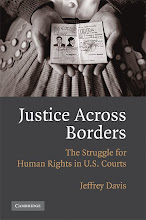Domestic violence is a widespread problem affecting many individuals
nationwide. Domestic violence is when there is overtly aggressive behavior in
the household (as it is usually behind closed doors), and is generally
comprised of violence towards a spouse member or a partner (as domestic abuse
is not limited to married couples). It involves the “willful intimidation,
physical assault, battery, sexual assault, and/or other abusive behavior as
part of a systematic pattern of power and control,” usually maintained by one
intimate partner who withholds constant power over the other. It also can
involve the fear of being harmed, as the abuser generally amasses power over
the other via threats and intimidation even if they do not engage in actual
harm, as well as isolation, making the victim feel as if they are alone and
have no where or one to turn to. These acts of violence and abuse can be
physical, sexual, psychological, as well as emotional, all of which can harbor
detrimental impacts upon the victim.
Relationship violence holds no prejudice
and will claim it’s victims regardless of “age, economic status, sexual orientation,
gender, race, religion, or nationality.”
However, about “85% of domestic violence victims are women,” and “25% - 45% of
all women who are battered are battered during pregnancy.” It is the most
common cause of injury to women between the ages of 15 and 44, even more so
than random muggings, vehicular accidents, and incidents of rape combined. Acts
of abuse are “rarely an isolated event,” meaning that women in these positions
will not be abused once, but most likely many times subsequent to the initial
event of violence.
This
issue of injustice is not only an immediate problem for the victim being
directly abused, but also has long term effects both upon the victim and for
individuals not directly involved. In terms of the victim, battery can have
long term health impacts. These can range from internalized psychological
issues that can remain with the victim long after they have been removed from
the situation, to medical difficulties that can remain with the victim into old
age; “arthritis, hypertension and heart disease have
been identified by battered women as directly caused or aggravated by domestic
violence suffered early in their adult lives.” It also keeps women from tending to
their responsibilities, like going to work. Beyond the damaging impacts
domestic abuse has on the victim, it can also impact children of the household.
About “30% - 60% of perpetrators of intimate partner violence also abuse
children in the household,” having a direct impact upon their safety. Not only
does relationship violence impact the immediate health of these children, they
also “display emotional and behavioral disturbances as
diverse as withdrawal, low self-esteem, nightmares, self-blame and aggression
against peers, family members and property.” This can impact their ability to
perform well in school as well as hinders them from progressing later on in
life. Also, young boys who do witness violence within the home are twice as
likely to abuse their own family members later on in life as they have been
exposed to and think this type of behavior is okay.
Domestic violence and abuse is an
enormous issue of justice in this country. It is extremely prevalent, as one
can see from the information given above, yet it is hardly addressed as so. One
statistic states that while there are 3,800 shelters for animals, there are
only 1,500 shelters for abused women, which is less than half that amount.
Police reports state that “40% - 60% of the of the calls they receive,
especially on the night shift, are domestic violence disputes,” yet police are
more likely to respond to a distress call if the “offender is a stranger than
if the offender is known to a female victim.” The issue of domestic abuse is
not taken seriously in this country, even though a woman is beaten every 15
seconds in the United States by a husband or partner. 1 in 4 women will
experience domestic violence within her lifetime, and 1 in 3 will be physically
assaulted by a partner in their lifetime. This is clearly an issue that should
take some kind of precedence, as it affects so many nationwide.
Though it
is a very pertinent problem in the United States, there are a few things that
one can do to help diminish the accounts of domestic violence across the
country. As a victim, one can: call the police, seek medical attention in which
the injuries will be documented, go to a shelter or a safe space, or try to
contact loved and trusted individuals who can help to remove one from the
situation. However, these are not necessarily so easy for victims to do. As a
non-victim, first and foremost knowledge is key. Spreading awareness of not
only the issue of domestic violence, but also the prevalence, can be the first
step in getting this country to overcome this issue. Also, advocating for
victims is an essential part of helping those who have been affected. So few of
the incidents are reported, perhaps because the victim is scared to do so or
does not realize that they are victims, so advocating for those who do not have
a voice can, in turn, give them the voice they need. Another option is donating
to institutions or shelters that wish to eradicate this issue. One such
institution is the House of Ruth. It helps women who are victims of battery and
abuse to find the shelter, safety, and security that every one deserves. Their
mission states that they provide women with the services that the might need in
order to escape their abusive situations. Institutions like these are key to
helping those who have been affected and are victims of this crime of
injustice.

